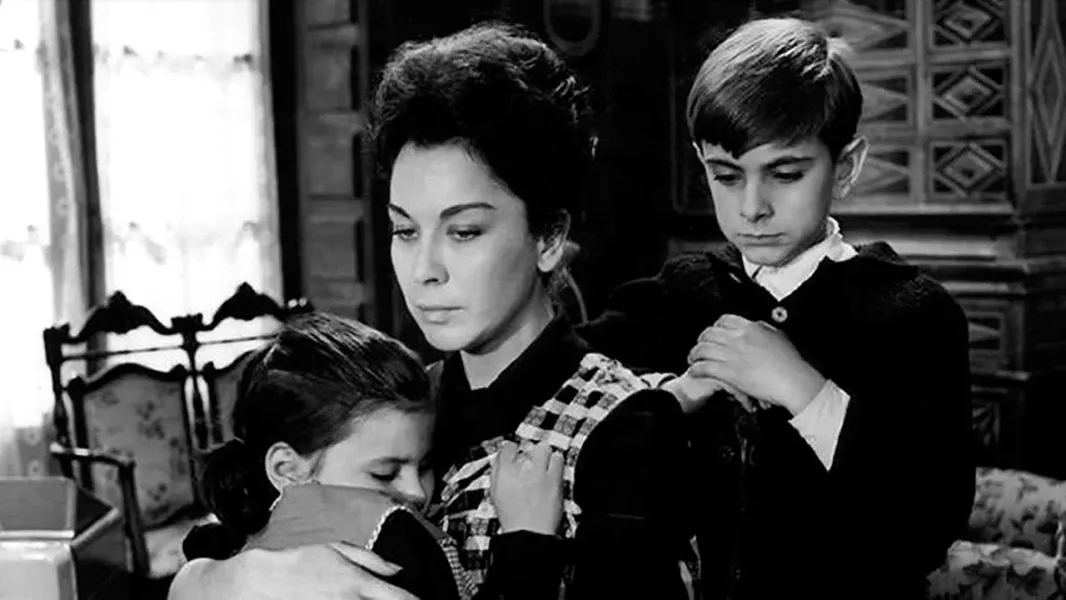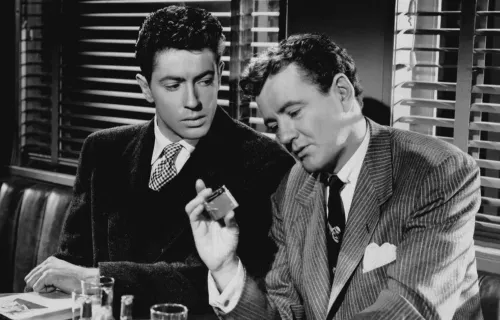
english and spanish below
Women in Black: How Not to Be Seen under Franco’s Dictatorship
Naar aanleiding van de video-installatie Resolución. Over levenskeuzes in de Spaanse cinema in MoMu, presenteren De Cinema en Europalia een gelijknamige filmreeks met zeven markante films uit Spanje, het gastland van Europalia 2025. Elke film draait rond één kleur. Elke kleur vertelt iets over vrouw-zijn en over de tijd waarin de film ontstond. Zwart-wit verwijst naar onzichtbaarheid en neutraliteit. Soms wordt het gebruikt om een gevoel van afwezigheid of een toevlucht te suggereren, zoals een overlevingsstrategie tijdens een dictatuur.
Na de dood van haar zus Rosa neemt Tula haar zwager Ramiro in huis. Het samenleven tussen de bescheiden, godvruchtige Tula en Ramiro verloopt stroef en gespannen, maar gaandeweg raakt Ramiro steeds meer aangetrokken tot zijn schoonzus.
Aunt Tula is zonder twijfel een van de scherpste portretten van de benepenheid en repressie die het leven in de Spaanse provincie tijdens het Franco-regime kenmerkten. De film is bovendien een van de meest trouwe verfilmingen van het werk van Miguel de Unamuno. Zijn roman verscheen in 1907, maar werd pas bijna zestig jaar later verfilmd – en liet toen zien dat Spanje amper veranderd was, en vooral: dat echte verandering nog lang op zich zou laten wachten.
Dit preutse, religieuze, hypocriete en bovenal onderdrukte Spanje vormde de achtergrond voor talloze films waarin vrouwen centraal staan als slachtoffers van dat systeem, zoals CIELO NEGRO (Manuel Mur Oti, 1951), SURCOS (José Antonio Nieves Conde, 1951) en EL MUNDO SIGUE (Fernando Fernán Gómez, 1965)... allemaal onderdeel van de video-installatie Resolución: Over levenskeuzes in de Spaanse cinema in het MoMu.
De film zal worden ingeleid door curator Beatriz Navas.
ENG
The film is in Spanish with English subtitles
Upon the death of her sister Rosa, Tula receives her brother-in-law Ramiro into her home. The coexistence between the modest and religious Tula and Ramiro is initially fraught with tension and friction, but gradually Ramiro becomes attracted to his sister-in-law.
This is, without doubt, one of the sharpest portraits of the mediocrity and repression experienced in Spanish provinces during Franco’s regime. It is one of the most faithful adaptations of an essential author like Miguel de Unamuno; written in 1907 but adapted almost 60 years later, it reminded us that Spain had not changed much and would take many years to do so.
This timid, religious, hypocritical, and above all repressed Spain gave rise to numerous films starring women victims of this oppression: CIELO NEGRO (Manuel Mur Oti, 1951), SURCOS (José Antonio Nieves Conde, 1951), EL MUNDO SIGUE (Fernando Fernán Gómez, 1965)... all present in the video installation Resolución. On lifetime decisions in Spanish Cinema at MoMu.
The film will be introduced by curator Beatriz Navas.
ESP
La película está en Español con subtítulos en Inglés
A la muerte de su hermana Rosa, Tula recibe en su casa la compañía de su cuñado Ramiro. La convivencia entre la recatada y religiosa Tula y su cuñado, al principio, no está exenta de roces y tensiones, pero poco a poco Ramiro se siente atraído por su cuñada.
Este es, sin duda, uno de los retratos más agudos de la mediocridad y la represión que se vivía en las provincias españolas durante el franquismo. Se trata de una de las adaptaciones más fieles de un autor esencial como Miguel de Unamuno; escrita en 1907 pero adaptada casi 60 años después, venía a recordarnos que España no había cambiado tanto y que iba a tardar muchos años en hacerlo.
Esta España timorata, religiosa, hipócrita y, sobre todo, reprimida dio pie a numerosas películas protagonizadas por mujeres víctimas de esta opresión y presentes en la videoinstalación ‘Resolución. On lifetime decisions in Spanish Cinema’ del MoMu: CIELO NEGRO (Manuel Mur Oti, 1951), SURCOS (José Antonio Nieves Conde, 1951), EL MUNDO SIGUE (Fernando Fernán Gómez, 1965) … todas presentes en la pieza final.
Con introducción por curador Beatriz Navas



